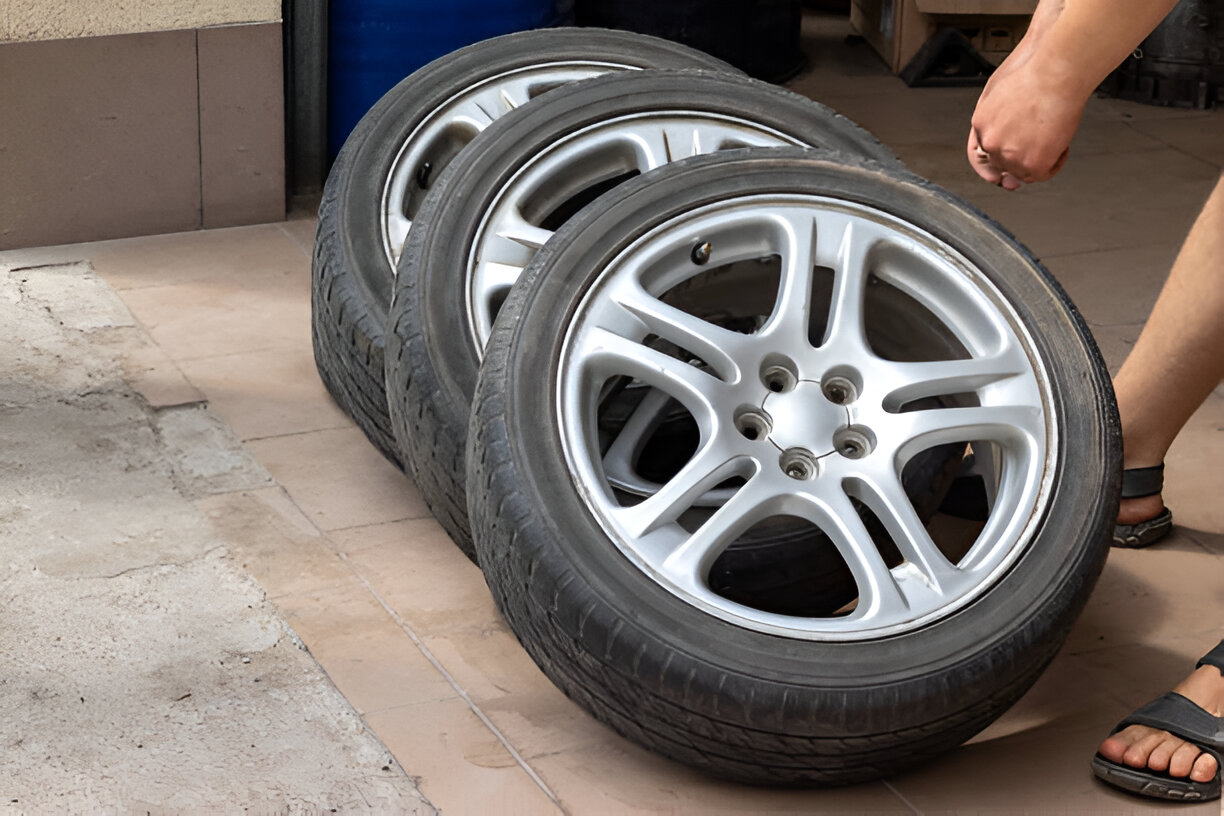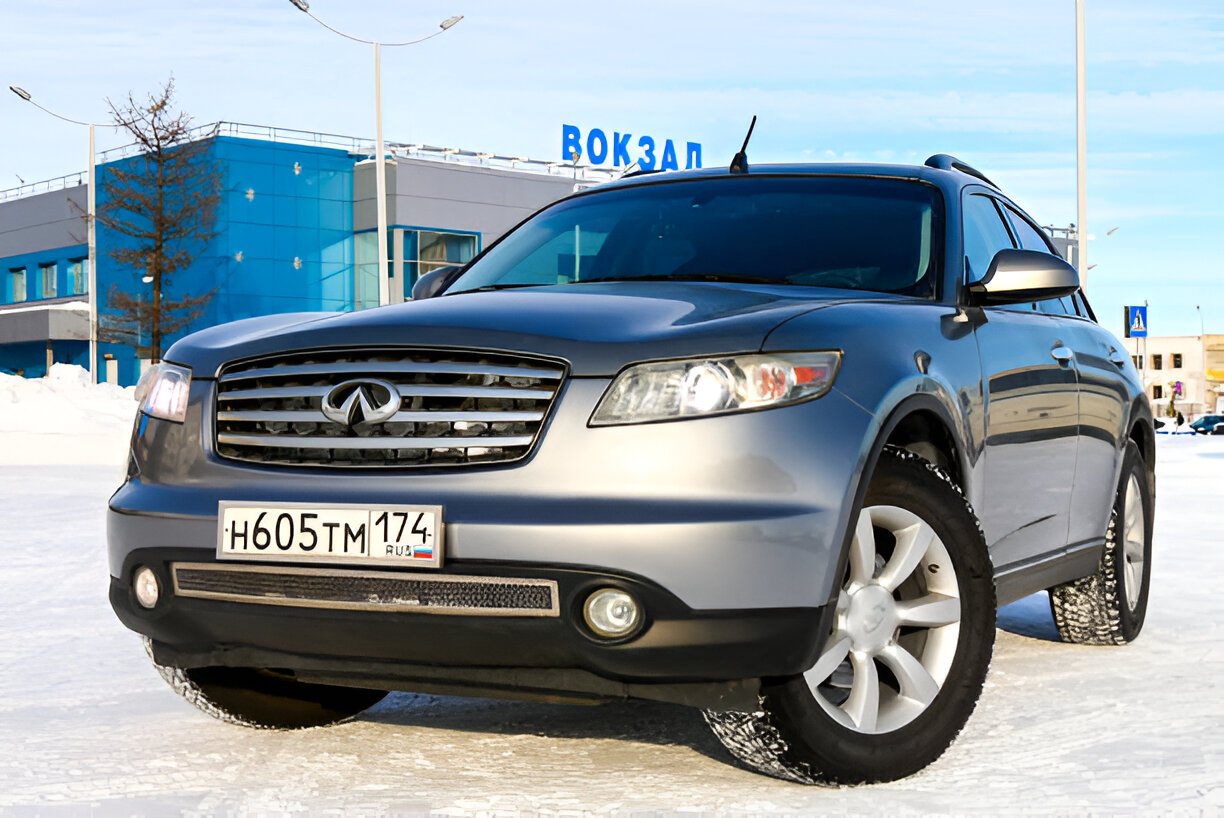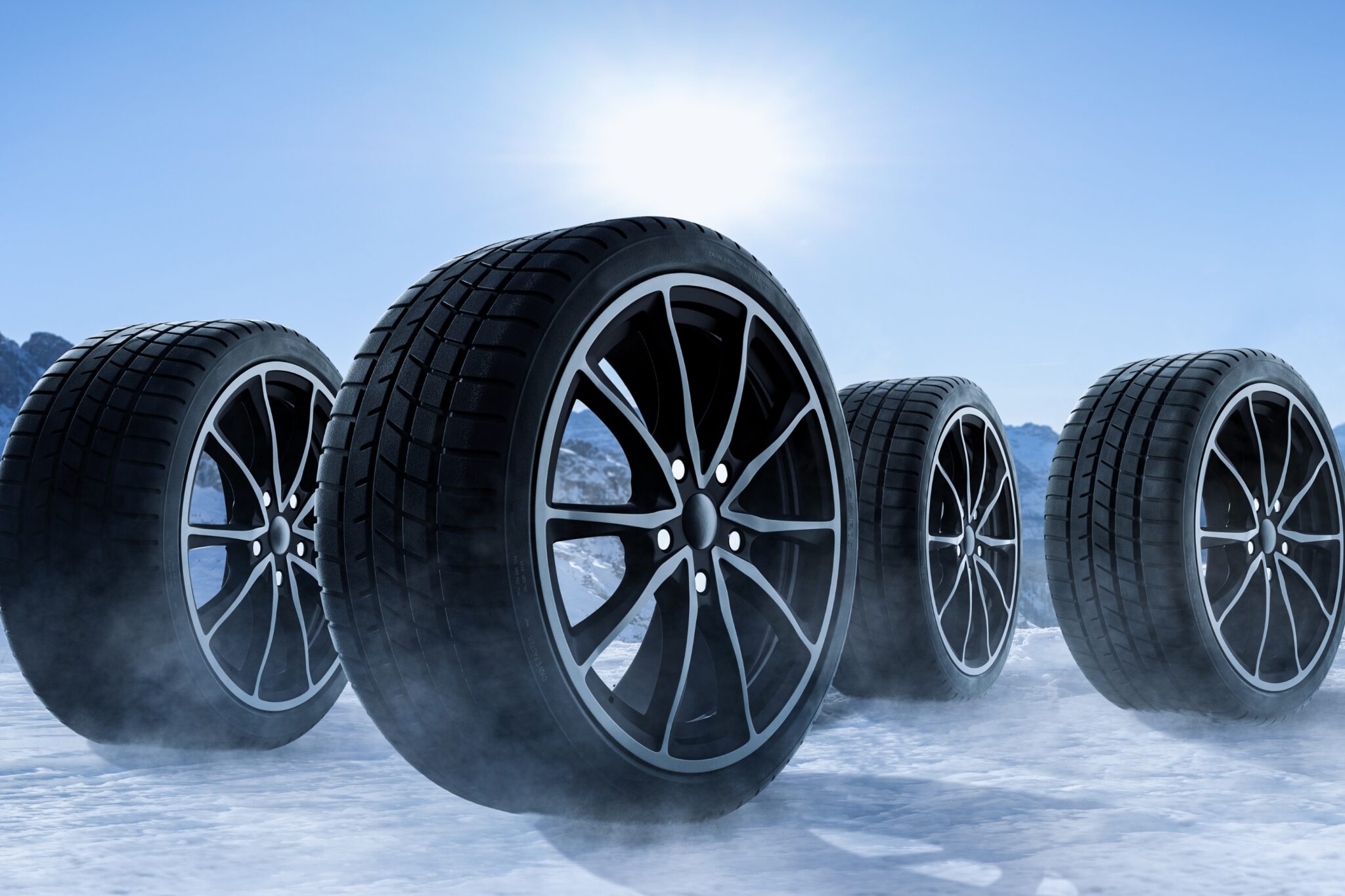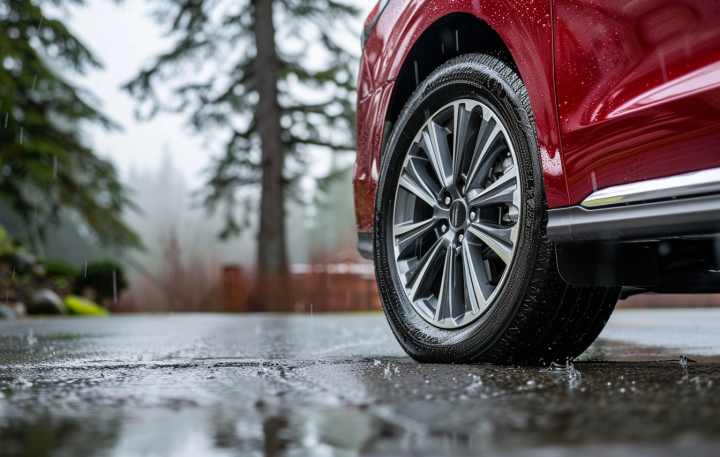Last Updated on August 1, 2025
Quick and Effective Tire Safety Inspection Guide
Many parts of the U.S. will soon be hit by winter weather, so now is the time to learn how to do a tire safety check. A quick review of the air pressure and a visual inspection of the tread and sidewall of the tire are proactive steps to avoid a blowout. This blog will guide you through a simple tire safety check to ensure your tires are in top shape.
Tire Safety Check in 4 Easy Steps
Ensuring your tires are safe is essential for a worry-free ride. In four easy steps, you can learn how to check your tires and secure your journeys. Let’s get started on the road to tire safety!
1) Do a visual inspection of the tires. Things to look for :
- Damage to tire sidewall: This could be in the form of chunks of missing rubber, deep abrasions from hitting curbs, or a bulge in the sidewall. A lump in the sidewall is likely related to a broken cord inside the tire. This severe condition will almost certainly lead to tire failure—any chunking larger than a dime or abrasion that has exposed the textile cords warrants further inspection. Larger cracks may indicate hitting a curb or an impact with a road hazard. All these conditions can be assessed at a tire dealership or auto service center to determine the damage’s severity.
- Worn tire tread: No tire safety check is complete without measuring the impression. All tires have a bar in the grooves molded to a height of 2/32nds of an inch. If this bridge in the track is level with the top of the tread, you know it is time to change your tires. You can also measure the depth of the way using a penny. If you can see all of Lincoln’s head, then the tire is due to be replaced.
- Check the tread for areas that are worn unevenly. This could signify mechanical issues such as worn suspension parts or wheel misalignment. Irregular wear is more common on the front tires. To inspect the tread, turn the steering wheel to one side to see the entire track surface and see if there is a wear pattern like the one on the left. It would be best to have your tires rotated and the vehicle inspected for mechanical issues.
2) Check the air pressure in all four tires. Adjust as needed :
Regular inflation pressure checks: This is an often neglected but essential part of any tire safety check. Most late-model vehicles have tire pressure monitoring systems (TPMS for short). These systems alert you to low tire air pressure via dashboard indicator lights. If this happens, check the tires immediately, including the spare tire.
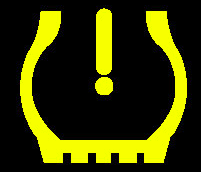
An inexpensive, stick-style pressure gauge like the one on the right should be kept in the vehicle and used periodically. This is a good idea even if you have TPMS. The indicator will not alert you if the tires are overinflated. Tires should be checked after a few miles of travel when they are warm. This is particularly important if the ambient temperature is below 40 degrees.
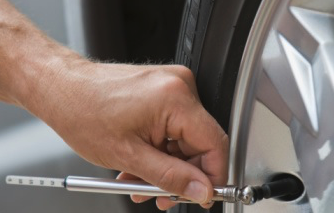
Compared to the recommended inflation: This information can always be found on the vehicle placard inside the driver’s door. Usually, there is one pressure for all four wheel positions, but occasionally, the vehicle manufacturer recommends different stress on the front and rear axles.
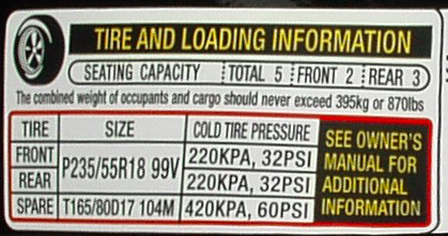
Adjust tire air pressure as needed: If it is too high, air pressure can be bled out of the tire using the backside of most pressure gauges. You can also insert the top of the valve cap into the valve stem. If the pressure in the tire is too low, most tire dealers or auto service centers will top up your air at no charge. Be sure not to overfill the tires. The tires will perform best and last the longest at the recommended air pressure.
3) Use the recommended tires for your vehicle and weather:
- Tire size and speed rating: If you are not the vehicle’s original owner, it is a good idea to check that the correct size was installed. You also want to ensure the tire has the right service description (load and speed rating). The guide on the left makes it easy to find the size and load rating on the side of your tire. Once you have noted the tire information, you can compare it to the tire size and specifications on the placard.
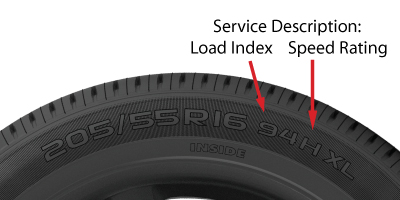
- If the wheels were changed for a larger size (often done for a sportier look), the air pressure recommendation remains the same. The speed rating and load capacity should always equal or exceed the original tire. Even if you never intend to travel at the maximum speed, a lower speed rating impacts how the vehicle handles at all speeds.
- For example, a vehicle designed for V-rated performance tires equipped with T-rated replacement tires would have degraded handling. It would also not break and would be less responsive to steering input. This is particularly problematic in winter driving conditions like heavy rain, snow, and ice. Watch this short video for a full explanation of how to read the size off the side of the tire.
- Tire style: Once you have determined that your tires are the correct size and have a tire speed rating and load capacity that is equal to, or superior to, the recommendation from the vehicle manufacturer, you want to take note of the tread pattern. Some tire treads are only optimized for wet and dry roads (summer tires). Others are for wet, dry, colder weather, and light snow (all-season tires).
- There are only winter tires for winter conditions (wet, slush, cold roads, ice, and snow). Even the highest quality, brand-new summer tires will not perform in winter conditions, and snow tires will wear out quickly in the heat of spring and summer.
- See Buying Tires Online—What to Know for more information about the different tire styles. If you are driving on the wrong kind of tire for your climate, investing in the right style will make a big difference in your driving enjoyment and overall safety.
4) Keep informed with up-to-date information about your tires.
- Tire recalls: When you do a tire safety check, it is easy to take the extra step to validate if there is a recall on your tires. The Rubber Manufacturers Association’s Tire Recall Look-up Tool is an excellent resource. You enter the DOT number of your tires in the recall tool. This will tell you if your tire is the subject of any investigation or product recall. If so, you are likely entitled to a new set of tires from the manufacturer at no cost!
- Consumer Reviews: Several online resources have product and consumer tire reviews. If you are considering a specific tire brand or style or want to discover the performance issues with your tire model, sites such as Consumerreports.org can be beneficial.
How To Do a Tire Safety Check
Your tires are the only point of contact between your vehicle and the road, making tire safety checks a crucial part of responsible car ownership. Regular inspections can prevent accidents, extend tire life, and save money.
1. Check Tire Pressure
Why It Matters: Incorrect tire pressure affects handling, fuel efficiency, and tire wear.
What to Do:
- Use a tire pressure gauge to check each tire’s pressure.
- Refer to your vehicle’s manual or the sticker inside the driver’s door for the recommended pressure.
- Adjust the pressure as needed, adding air if it’s too low or releasing some if it’s too high.
2. Inspect Tread Depth
Why It Matters: Adequate tread depth ensures proper traction, especially in wet or slippery conditions.
What to Do:
- Use a tread depth gauge or a coin (like a penny or a quarter) to measure tread depth.
- Insert the coin into the tread with the top of a president’s head facing down.
- If you can see the entire head, it’s time to replace the tire.
3. Look for Visible Damage
Why It Matters: Damage like cuts, bulges, or cracks can weaken the tire and lead to blowouts.
What to Do:
- Visually inspect each tire for signs of damage.
- Look for cuts, punctures, bulges, or sidewall cracks.
- If you spot any damage, consult a professional for evaluation.
4. Check Tire Age
Why It Matters: Tires age; old tires can become brittle and prone to failure even with plenty of treads left.
What to Do:
- Find the DOT (Department of Transportation) code on the tire sidewall.
- The last four digits indicate the week and year of manufacture.
- Tires older than six years should be replaced, even if they appear fine.
5. Balance and Alignment
Why It Matters: Proper balance and alignment ensure even tire wear and better handling.
What to Do:
- If you notice uneven wear or your vehicle pulls to one side, it’s time for a professional inspection.
- Regularly schedule wheel balancing and alignment to extend tire life.
6. Spare Tire Check
Why It Matters: Don’t forget the spare tire; it’s your safety backup.
What to Do:
- Ensure your spare tire is properly inflated and in good condition.
- Check it during your routine tire safety checks.
Conclusion
Regular tire safety checks are simple yet crucial for your safety on the road. You can extend your tires’ life and drive confidently by maintaining proper tire pressure, inspecting tread depth, looking for damage, checking tire age, and addressing balance and alignment. When in doubt, consult a tire professional for a thorough inspection and maintenance.
At Tires-Easy, we want you to be armed with all the information you need to perform a tire safety check. This will give you more security and comfort during winter driving.
FAQs
How do you measure tire safety?
Tire safety is measured by factors like tread depth, tire pressure, and visual inspections for damage. Proper maintenance and regular checks ensure safer tires.
What is a tire inspection?
A tire inspection involves examining tires for tread wear, pressure, and signs of damage, such as cuts, bulges, or cracks. It ensures that your tires are in good condition and safe for driving.
What is tire safety?
Tire safety refers to the condition and maintenance of your tires to prevent accidents and ensure safe driving. It includes checking tire pressure, tread depth, and overall tire condition.
How do you check if my tires are bad?
To check if tires are bad, look for signs of wear, insufficient tread depth, uneven wear patterns, or visible damage like cuts or bulges. If you’re uncertain, consult a tire professional for assessment and advice.
-
Automotive Specialist
-
Proofreader
-
Writer




